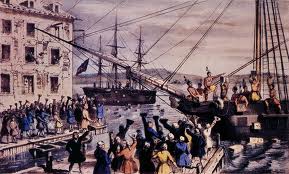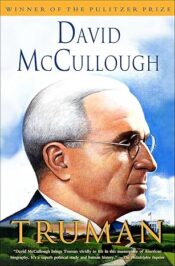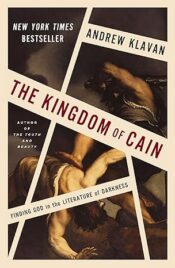
Recapturing the Tea Party
 Contrary to popular opinion, the Boston Tea party was more than a protest over taxes. Taxes were a big element, but it was also a protest against a Parliament that wouldn’t listen, denied the colonists representation, and tried to control trade throughout the empire. It took many years of corrosive exchanges between the American colonies and England to ignite the Boston Tea Party.
Contrary to popular opinion, the Boston Tea party was more than a protest over taxes. Taxes were a big element, but it was also a protest against a Parliament that wouldn’t listen, denied the colonists representation, and tried to control trade throughout the empire. It took many years of corrosive exchanges between the American colonies and England to ignite the Boston Tea Party.
The Boston Tea Party was not a prank perpetuated by a few rowdies dressed as Native Americans. On December 16, 1773, as many as 7,000 people congregated around the Old South Meeting House. Hundreds crowded into the church to hear partisan speeches, but most of the protesters spilled out onto the streets. Legend has it Sam Adams gave a signal to send 200 colonists—a few dressed as Native Americans—marching in columns down to the docks. As they approached, the protestors split into equally sized groups to board the three tea-carrying ships. Within three hours, the Tea Partiers broke open 342 chests and threw the tea into the sea.
The Sons of Liberty organized the protest. For the most part, the Sons of Liberty was comprised of merchants, tradesmen, farmers, and the professionally self-employed. Americans were used to limited government, and with the truly free markets in the New World, many, if not most, had built a prosperous life. They had engaged in trade within the colonies, but Parliament had severely restricted their trade with the rest of the world. They despised control of their livelihood, which included the tea monopoly given to the East India Company by Parliament.
The Boston Tea Party was a deliberate act by ordinary citizens who would be remembered for their extraordinary courage and conviction. Beyond the tax, it was a revolt against the philosophy of mercantilism that lay behind the Townshend Revenue Act of 1767. Mercantilism assumed the world economy was a zero-sum game, but Adam Smith, in Wealth of Nations proposed a new economic theory that said the capitalism and free markets grew wealth for all. The colonists had a perfect example right before them. Starting from scratch, commerce and prosperity thrived to the point where most Americans were literate, well-fed, and optimistic about their future. In fact, Philadelphia had grown to be the second largest English speaking city in the world.
Back in England, Parliament reacted predictably. First, members ridiculed and belittled the protesters. Then they punished the colonies by passing the Intolerable Acts which, among other things, closed Boston Harbor. For all the rage against the colonists, no one in London seemed to notice the mounting emotion, growing size, or broad-based leadership of the movement.
The modern Tea Party movement has many similarities with its namesake. More than two centuries later, on April 15, 2009, reborn Tea Parties assembled throughout the United States, to protest a government which was unresponsive. Like the original Boston Tea Party, today’s incarnation exploded from grassroots discontent; leadership is dispersed; and affiliated organizations spread out across the nation so fast it startled seasoned politicos. The Tea Party deserves a lot of credit for raising awareness about excessive government spending, the national debt, and the encroachment of the national government on more and more aspects of the economy and daily lives of Americans.
The discontent that set off the Boston Tea Party eventually led to rebellion. Tea Partiers engage in peaceful demonstrations because, unlike 1773, they have representation. Not only were the colonists unrepresented in Parliament, the king appointed the top executive in most of the colonies. Today, the Tea Party wields a potent ballot box to make their voice heard.
Congress may not have fully grasped the message from voters and activists, but as the movement refuses to abate, they are listening better every day. When people get dissatisfied enough to leave their home, those in power need to heed their concerns.
James D. Best is the author of Tempest at Dawn, a novel about the 1787 Constitutional Convention.
 The posts are coming!
The posts are coming!


4 comments
This historical perspective is absolutely critical to understanding the importance of dissent. Excellent post. I’ve linked to you on my site. I’m hoping others will follow it.
[Reply]
Martin Reply:
February 8th, 2011 at 8:45 pm
Thanks so much! (I’m a regular visitor to your site!)
[Reply]
Will history make the same mistake with this tea party as it did with Boston’s? Will they say the tea party movement was orchestrated by people like Sarah Palin and Dick Armey just as many still believe that Sam Adams orchestrated the Boston Tea Party?
[Reply]
Martin Reply:
February 8th, 2011 at 8:48 pm
Hmmm, I’ve read conflicting things as to Sam Adams’ involvement. Harlow Giles Unger seems pretty sure that Sam was involved behind the scenes.
One big difference between the start of today’s Tea Party and the original is that today’s was more spontaneous. Sam Adams was pretty busy for a lot of years riling everyone up before the actual event.
[Reply]
Leave a Comment